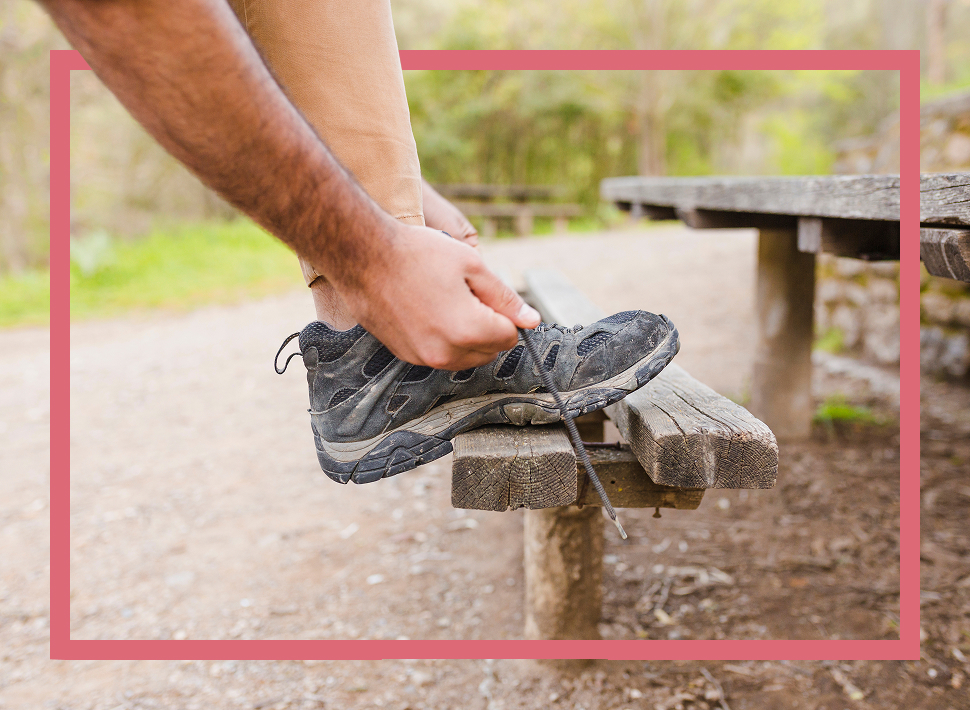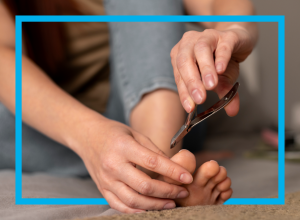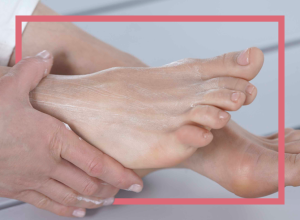Hiking is good for body and soul – fresh air, exercise and experiencing nature all in one. But all too often the feet are neglected. Complaints only become noticeable after the tour: swollen feet after hiking, pressure sores or even blisters can quickly spoil the fun.
If you prepare your “hiking feet” for the strain in good time, you will not only protect yourself from pain, but also ensure that you feel good with every step. In this article, you will learn how to prepare your feet ideally for longer hikes, which care products are useful and what you can do if you do experience discomfort.
What hiking does to your feet
Our feet do a lot of hard work when hiking. Every step brings strain, friction and often heat – especially in closed shoes. So it’s no wonder that typical complaints such as blisters, swollen feet or even rashes often occur during or after hiking.
Heat builds up in the shoe, especially on hot days or long stages, and moisture cannot escape properly – an ideal environment for friction and skin irritation. The heels, toe tips and gaps are particularly exposed, but the instep can also react sensitively. If the skin is not adequately prepared or cared for, the risk of pressure points, cracks and tightness increases significantly.
Preparation at home: foot care before the hike
Well-prepared feet are the best basis for a successful hiking tour. Regular care prevents typical complaints such as blisters or pressure sores. A small, preparatory routine a few days before the tour is worthwhile:
- Foot bath & gentle callus removal: A lukewarm bath softens the skin. Excess calluses can then be gently removed with a pumice stone or file – but please don’t overdo it, as a little protection from the calluses is actually helpful when hiking.
- Shorten & file nails smooth: Nails that are too long or unevenly cut can pinch in the shoe and cause irritation. Make sure you cut your nails straight and slightly round off the edges.
- Take care of your skin: A moisturizing foot cream keeps your skin supple and protects it from drying out. If you are prone to chafing, you can use specific care products in the days before the hike to strengthen the skin.
This preparation helps you to optimally prepare your hiking feet for the upcoming strain – especially if longer or more demanding routes are planned.
The right equipment for healthy feet
Good care alone is not enough – the right equipment is also important. Hiking boots should be well broken in, fit well and be breathable. Models that are too tight can cause blisters, those that are too wide can cause friction. High-quality insoles can also improve comfort.
Equally important: the choice of socks. Models made from merino wool or functional materials wick away moisture better and prevent heat build-up.
A common mistake: wearing new shoes and unfamiliar socks directly on the tour – in this case, the risk of blisters and the like increases considerably.
During the tour: recognize complaints and react early
You should act as soon as you feel the first signs of pressure or friction. Blisters, rashes or swollen feet after hiking can often be avoided if you relieve or cool your feet in good time.
Practical in your rucksack: blister plasters, deer tallow, fresh socks and a small tube of foot cream. After all, if you pay attention to skin signals on the way and take regular short breaks, you will protect your hiking feet from problems later on – and arrive at your destination more relaxed.
Care afterwards: How to regenerate your hiking feet
After a hike, your feet will appreciate some rest and attention. Swollen feet can be soothed by elevating them, cool foot baths and gentle movements. Loose positioning overnight can also help to promote blood circulation.
You can also support your troubled feet with our skin care and foot care products: Spirularin® SR Cream is particularly suitable for cracked or heavily stressed heels, while Spirularin® HF Mousse offers light care for the entire foot. For sensitive skin or mild irritation – after long walks, for example – Spirularin® HF Gel can help to soothe and moisturize the skin.
If you experience redness, tightness or even a rash on your feet after hiking, you should treat the affected areas of skin particularly gently and keep a close eye on them. Airy shoes, a day’s rest and targeted care create the best conditions for healthy, resilient feet – even on your next outing.
Conclusion
Hiking is only fun if your feet play along. With good preparation, the right equipment and a little care, you can avoid blisters, swelling or skin irritation – for healthy, beautiful feet and a carefree experience in wild and romantic nature.
By the way: Here you can find more information about typical foot problems of hikers.
Experten-Tipp entstand in Zusammenarbeit mit:
Patrick Günther
Patrick Günther completed his pharmacy studies in Hamburg and, after obtaining his licence to practise, worked for several years in marketing and sales in the pharmaceutical industry. In 2003, he took over ocean pharma, the company founded by his father in Reinbek near Hamburg in 1978. Together with his business partner, he patented the important processing and standardisation process for the microalgae active ingredient Spiralin® and developed a wide range of medical cosmetics and foot care products based on Spiralin®.







